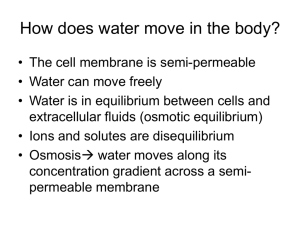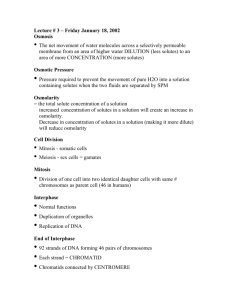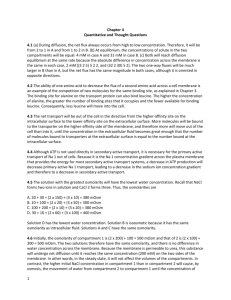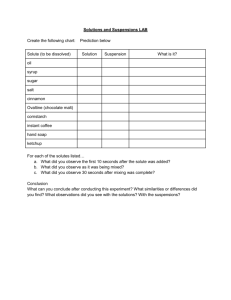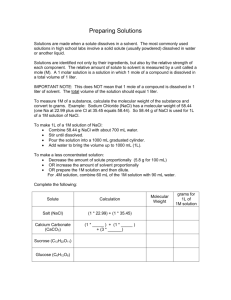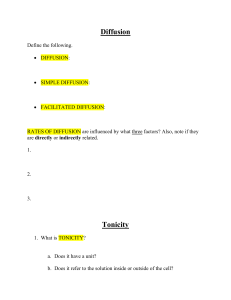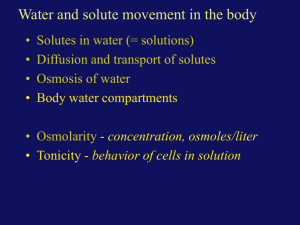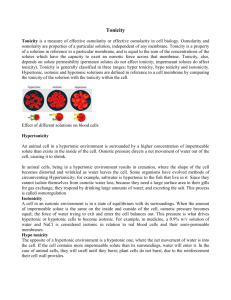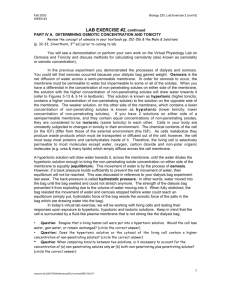Osmolarity and Tonicity
advertisement
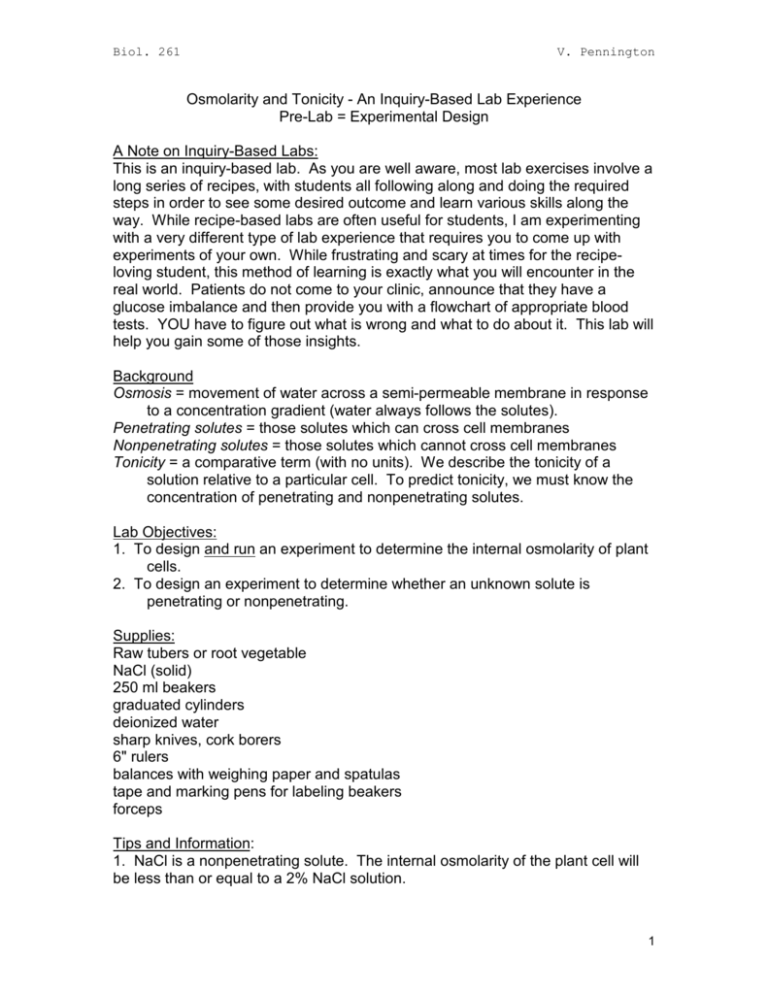
Biol. 261 V. Pennington Osmolarity and Tonicity - An Inquiry-Based Lab Experience Pre-Lab = Experimental Design A Note on Inquiry-Based Labs: This is an inquiry-based lab. As you are well aware, most lab exercises involve a long series of recipes, with students all following along and doing the required steps in order to see some desired outcome and learn various skills along the way. While recipe-based labs are often useful for students, I am experimenting with a very different type of lab experience that requires you to come up with experiments of your own. While frustrating and scary at times for the recipeloving student, this method of learning is exactly what you will encounter in the real world. Patients do not come to your clinic, announce that they have a glucose imbalance and then provide you with a flowchart of appropriate blood tests. YOU have to figure out what is wrong and what to do about it. This lab will help you gain some of those insights. Background Osmosis = movement of water across a semi-permeable membrane in response to a concentration gradient (water always follows the solutes). Penetrating solutes = those solutes which can cross cell membranes Nonpenetrating solutes = those solutes which cannot cross cell membranes Tonicity = a comparative term (with no units). We describe the tonicity of a solution relative to a particular cell. To predict tonicity, we must know the concentration of penetrating and nonpenetrating solutes. Lab Objectives: 1. To design and run an experiment to determine the internal osmolarity of plant cells. 2. To design an experiment to determine whether an unknown solute is penetrating or nonpenetrating. Supplies: Raw tubers or root vegetable NaCl (solid) 250 ml beakers graduated cylinders deionized water sharp knives, cork borers 6" rulers balances with weighing paper and spatulas tape and marking pens for labeling beakers forceps Tips and Information: 1. NaCl is a nonpenetrating solute. The internal osmolarity of the plant cell will be less than or equal to a 2% NaCl solution. 1 Biol. 261 V. Pennington 2. NaCl has a molecular weight of 58 and the dissociation constant is 2. 3. Your incubation time must be at least 60 minutes. 4. Do not allow samples to dry out before placing them in solution. Remove any peel from your samples. 5. You will be expected to graph your data and report to the class on your experimental design and results. You will be graphing changes in cell volume as a function of solution osmolarity. What to Do Now / Questions to Consider: 1. Looking back at the lab objectives, work with your lab partners to design your experiment. 2. Decide how to make the solutions (YOU WILL MAKE ALL OF YOUR OWN SOLUTIONS). How many solutions will you test? How many pieces of vegetable in each concentration? 3. How will you measure water movement into and out of the vegetable? 4. What will be the most likely sources of error? 5. After the lab is over, I present you (hypothetically) with an unknown solute ("solute P.") Design an experiment (write the general steps in your lab notebook) to determine whether the solute is penetrating or nonpenetrating. Describe the possible results and what they would mean. Help With Calculations 1. Making percent solutions: To make a 2% NaCl solution, place 2g of NaCl in a beaker and then add 98g (=98ml) of deionized water. 2

